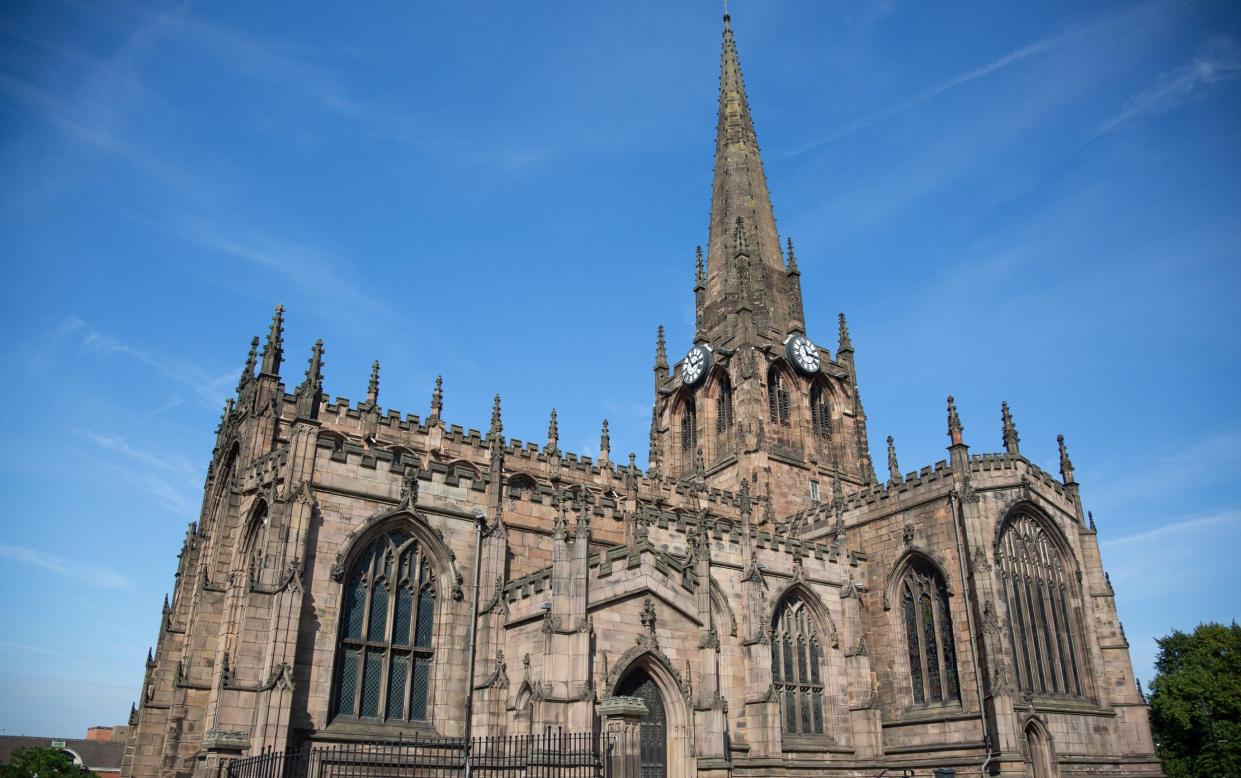Sacred Mysteries: Yes, minster: a new civic dignity for old churches

I was enjoying a cup of coffee a few years ago in a patch of autumn sunshine outside Fitzwilliam and Hughes cafe (now the Ministry) on the corner of Church Street in Rotherham (a town named in a survey in 2022 as the unhappiest place in the country to live).
Some parents, the majority of them of Asian background, were taking photos of their grown-up children posing in mortar-boards, having attended a graduation ceremony in the mostly 15th-century parish church of All Saints, “one of the largest and stateliest churches in Yorkshire”, as Nikolaus Pevsner, the great architectural historian, put it.
It was a cheering contrast to nearby Corporation Street, where the Envy nightclub and shops beneath were damaged by fire in 2007 and the next-door Muskaan Indian restaurant was closed after a fire in 2011. They have lain ruinous and empty ever since, though I hear that the council has confirmed a compulsory purchase order to allow redevelopment.
What puzzled me was the sign outside All Saints proclaiming it as Rotherham Minster. This didn’t ring a bell, as Southwell Minster or Beverley Minster would.
It turned out that a few historic churches – 17 at the last count – have been designated minsters in the Church of England, with the conscious intention of recognising a wider role than looking after the immediate parishioners.
Most acquired the new title this century, though the first two were Dewsbury (1994) and Sunderland (1998). Rotherham has been a minster since 2004, the third place to receive the revived title. That does not change its legal or ecclesiastical status.
The minsters that we used to recognise, half-consciously sometimes, had very ancient origins. Two great northern cathedrals, York and Lincoln, are called minsters. Westminster Abbey, dedicated to St Peter, was the counterpart of St Paul’s, seen as the east minster, though I’m not sure that the phrase “east minster” was applied to it.
Minsters derive their names from the Latin monasterium, “monastery”, but by the 8th century monasterium was being applied to great churches here or on the Continent that were not monasteries.
It is presumed now that pastoral care was organised before the Conquest largely by way of minster churches staffed by communities of clergy, whether priests not under vows or monks. Since the 1980s the historian John Blair has outlined the way these might have functioned. Westminster Abbey was a house of Benedictine monks. York Minster was a foundation of non-monastic canons.
At Southwell Minster, which looks like an ancient cathedral but became one only in 1884, nine beautiful houses survive nearby that belonged to the prebendaries who acted like the chapter of a cathedral. Southwell was suppressed as a collegiate church in 1540, though it was not a monastery. Surprisingly, under Elizabeth I a law was passed that provided for it to function as a collegiate church, its prebendaries supported by land attached to their prebendal livings.
This was just the sort of thing that in the reforming days of Queen Victoria the Ecclesiastical Commissioners hated. They ensured in 1841 that each prebend lapsed on the death of its holder, until the whole chapter became extinct on the death of Prebendary Thomas Shepherd, 32 years later.
Today’s minsters lack the benefits of a college of clergy. But perhaps the status draws attention to overlooked churches such as Croydon Minster, where six Archbishops of Canterbury lie buried.

 Yahoo News
Yahoo News 
